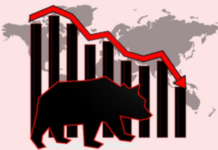Mumbai– The massive capital expenditure push in the Union Budget 2022-23 cheered the investors and led the key domestic indices — S&P BSE Sensex and NSE Nifty50 — to make substantial gains on Tuesday.
Initially, the market opened gap up, rose in the early part of the day’s trade but fell sharply post the Budget speech.
Nevertheless, it recovered to close to intra-day high.
At the end of the day, Sensex settled at 58,862 points, up 1.5 per cent, whereas Nifty settled at 17,576 points, up 1.4 per cent, from their previous close.
Globally, stock markets around the world started the new month on firmer ground as a slew of reassuring comments from Federal Reserve officials helped calm the rate-hike jitters even as strong US tech earnings lifted the market mood.
On the domestic front, volumes on the NSE were subdued.
Among sectors, metals, capital goods, realty, IT, healthcare and FMCG indices rose the most, while auto and oil and gas indices fell.
“Nifty ended in the positive boosted by growth inducing measures of the Union Budget. Advance decline ratio also remained in the positive,” said Deepak Jasani, Head of Retail Research, HDFC Securities.
“Markets are enthused by the credible conservative estimates in the Budget. However, high inflation and interest rates remain the two spoilsports. 17,745-17,805 could be the next resistance for the Nifty while 17,374-17,410 could be the support,” he added.
According to Siddhartha Khemka, Head of Retail Research, Motilal Oswal Financial Services: “It was clearly a capex driven Budget with the thrust of the government on sustaining the economic growth through spending across the infra ecosystem.
“Capital spending for FY23 is targeted to increase by 35.4 per cent to Rs 7.5 lakh crore with focus on infrastructure development, supply chain, and boosting rural demand.”
Vinod Nair, Head of Research at Geojit Financial Services, said: “It is a long-term growth oriented Budget which the market has welcomed, given no headroom for cautiousness and populist measures. It is expected to support growth in the future; however, it is missing some balancing measures in the context of the current inflation and slowing economy.
“Supportive measures were needed for rural population, agriculture, low taxpayers and for sectors impacted by the pandemic. High capex, fiscal deficit and borrowing plans in the background of high inflation, commodity and oil prices and rising interest rates will be the challenges in the short to medium-term.” (IANS)







